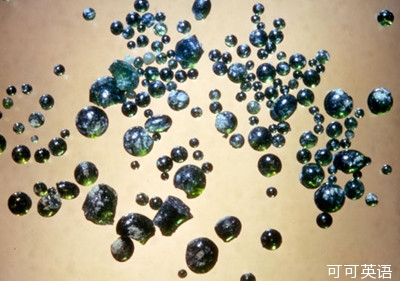It's sad but true: the moon is not made of cheese. But it still holds some fascinating surprises. Because a recent study finds that the moon harbors more water than was previously thought, and that this lunar H2O appears to hail from the same source as the water on Earth. That's according to work published online, in the journal Science Express.
这是悲哀但真实的事实:月球并不是由奶酪构成的。不过月球上仍然充满着意想不到的惊喜。因为近期一项研究发现,月球上蕴含的水分比之前想象的要多,且月球上的水似乎与地球上的水来源相同。这项研究发表在《科学快讯》杂志官网上。

The moon is thought to have formed by a violent collision between a spacefaring rocky body and the proto-planet Earth. It was also assumed that the heat of this impact would have caused any water, or its constituent elements, to boil off into space, leaving the baby moon high and dry.
关于月球的形成有一个假设:飞行的岩石行星剧烈地撞击原始地球从而形成了月球。还有一种假设:这种撞击产生的热能导致水(月球的组成元素)汽化后进入太空,留下干燥的月球高高悬挂在天上。
But recent studies have found that samples of volcanic glass, brought back from the moon on the Apollo missions, contain as much water as magma found here on Earth. Now, by examining the isotopic composition of that water, researchers have found that it matches that of meteorites, the likes of which also delivered Earth its first drink.
但是近期的研究发现,阿波罗计划从月球上带回来的火山玻璃含有与地球岩浆一样多的水分。现在,通过检查水的同位素构成,研究人员发现这与第一次给地球带来水的陨石相吻合。
The simplest explanation is that our planet was all wet before the impact that gave rise to its satellite. Next mystery to unravel: how did the moon manage to maintain that moisture?
对这个现象最简单的解释是:我们的星球在与行星撞击形成月球之前就有了水。下一个待解之谜:月球如何设法保住了水分?













